
Climbing up the stairs on the way to Mirko Ilić’s studio on 32nd street, I always pass next to Milton Glaser’s studio (same building, two floors between). From the curiosity I had to step in few times. Kind senior gentleman sits by his ancient petite drawing table surrounded by his collaborates, mostly young and attractive girls. Quite communicative and unpretentious.
Last year, I had chance to visit to events in his honor. SVA (School of Visual Arts) organised his retrospective (curated by Steven Heller and Mirko Ilić) at Starrett-Lehigh building in Chelsea. Secondly, it was the opening of new SVA Theatre, Glaser did design for it and main part was Tatlin like rotating sculpture at the entrance. During the opening various people spoke, short movies (Avant-Garde between wars) that served as ideals for creation of sculpture were presented. At the end, Milton spoke referring to Leger’s film “Ballet Mécanique”. “I am glad that I have finally saw this movie and that I don’t have to see it ever again.”
Again I am in front of the building in 32nd street, by the entrance there is a sign “Art is Work” and this time studio at the first floor is main destination, not a pass by attraction.

How a process of drawing is thinking?
I tell this anecdote, I was sixteen or seventeen sitting at the kitchen table with my mother and looking at her, and deciding I would draw her portrait. I’ve never done that before. And with that decision the mind shifts because you become attentive to what’s in front of you. And I realized at that moment that I had no idea what she looked like, that her face became invisible. As you know, all familiar experiences become invisible. So, everything that happens in your life that you repeat frequently enough you are no longer conscious of. And I realized the shift that I made in the mind alone was that I restored my capacity to see what’s in front of me. Momentarily. Most of human experience is about becoming ultimately unconscious of what’s in front of you. The whole question of what is real emerges then as an idea. And how reality is defined by the experience of the human brain. We can say that nothing is out there except in fact what is processed by the brain and made understandable. So, there is this odd correlation between what I believe to be thought and drawing. Act of drawing is a device to promote attentiveness. Attentiveness is a device for human survival. Drawing is one of the instrumentalities of attentiveness. For me that has been its fundamental purpose. It is a way by which I can test my idea of reality and the existing condition of my mind in terms of what is real against paying attention to something and trying to see it as it is. As a result of that it is for me an extraordinarily important element not only in the education of an artist, but also for anybody who is interested in the question of reality. You can say nothing exists until is processed by the brain, by expectation, by experience, by delusion... Abstraction assumes that there is something to abstract from. So that’s a starting point of physical reality in any case. Abstraction without reference is meaningless.
What about the relation between what you see and what you draw?
Any drawing is an abstraction to begin with. What you are talking about is likeness. What is it that creates likeness. How can we recognize a person from series of marks on a piece of paper. That is almost a miracle. The idea where you can represent a three dimensional object by series of lines on a sheet of paper is almost beyond understanding. It makes you realize that the capacity of the brain, even the most rudimentary brain, is totally miraculous. This whole question of relationship between a representation of something and the actual thing is one of most complex and interesting subjects for anybody concerned with the visual or philosophy or religion or metaphysics.

Your definition of art?
Draftsman is an idea to exclude the idea of art out of the process. What is art and what is not art. Paintings could be not art, and drawings could be not art. The question is when do we decide if the work is art. What is distinction between what is art and what is not art. For me the distinction is when the work makes you attentive, it is art. When it doesn’t make you attentive, it is not art. That simplifies the problem enormously for me. It means that all the work that I created inadvertently without the intention of being art, such as a drawing of a chair for carpenter to make it, can in fact be art if they are done in a certain way. They produce the effect of arousing attentiveness. I was looking for this definition since I was a child. That has finally clarified this distinction of what falls into category of art and those things that are outside of that category. For the first time it makes a very simple definition. If we can agree what attentiveness is.
Can we?
Awareness of what is real. Or an attempt of becoming aware of what is real.
You don’t paint and a lot of your work is done on paper. It’s a very unstable medium. Why did you choose it?
That’s an interesting question because my life was always been towards fugitive materials. Although, I am not sure that pen and ink, printmaking, watercolors, pencil drawing, are entirely fugitive. We still have pencil drawings from the Renaissance. The characteristics that they all share in terms of my own sensibility is that by and large they are not opaque. This is a much of a question of a physical preference, like why do you like silk shirts as opposed to cotton ones. You don’t exactly know why. I don’t know why. I never felt an affinity for tempera paint or for oil paint as a medium. And I think it has to do with opacity. What I always liked is transparency of materials where you can overlay and erase. And I always liked working with cheap materials. For good part of my life I used newsprint paper, a lot of which totally has disintegrated and disappeared, because I was never liked the idea of spoiling a piece of $10 watercolor paper. And I think early in life there was a big fact, you know, growing up as a student during the depression where money was really important. The idea of taking a 6 or 7 dollar piece of paper and ruining was incomprehensible. So, the secret way to get around it is to use materials that if you spoil them there was no financial consequence. And than I’ve got used to the surface quality of newsprint and I found out that I could do my best work on it, because it was so fugitive.
How someone develops drawing as a communication skill?
You start basically by learning to communicate to yourself. By saying “I see this object, and this mark I made is a good representation of that object. But I’d like to make it stronger...” The initial conversation is personal one. With the self. It has some references to the use of spoken language. How do you learn to talk. First you make sounds and you are delighted by the sounds, and the knowledge that you made those sounds. Then you discover that those sounds can affect others, and then you try to refine them so others can receive what you are trying to convey etc.

Do you do a lot of sketches?
I do when I’m drawing from observation. When I’m trying to solve a problem for a specific purpose, like a book jacket or an illustration or a design for a table, I do sketches. I work at both extremes. I will spend weeks doing studies on a single thing and I will do something within moments of getting an assignment and finish it. It depends very much on the context of the work.
Difference in approach if there is any when you work for a supermarket or a stage play?
My approach is always the same and that is to let my unconscious mind, which is smarter than I am, make the associations and link the imagery. But that is the same if it is a package of soup or if it is an illustration. Everything is connected, and what you need is, and you get that through experience, the sense of appropriateness. It’s like making a sandwich for lunch or preparing a meal for your guests.
There is a lot of variations of your I❤NY. Do you remember some of them that you particularly like or dislike?
They have collected around 5000 variations of I❤NY that was kept in the closet of the Department of Commerce. They finally decided that there were too many to track, so they threw them all out. There have been so many variations that it has become generic. It is very odd that this one thing, this very simplistic idea turned out to be the thing the world have been waiting for. At that moment. And continually. It has not stopped. It is totally weird. It must have been something people were looking for. I like the one I put in my book “Graphic Design”, "I❤rhinoceroses", from Africa. There are hundreds of them that are stupid and hundreds of them that are clever.
Your relationship with New York?
You love it and you hate it. It’s like a relationship you have with your parents. You love them, you hate them, they are part of your structure. You would not be what you are. I said this and I think it’s true: New York is not a place it is a projection screen. It is so complex that it encompasses everything. The worst and the best. The worst people, the best people, the cleverest, the stupidest... The most pleasant and the least pleasant experience... It is truly the most complex system that you could imagine or create. In fact you could not imagine or create it, it has to be an evolutionary process. So when people talk about New York, it’s a place that doesn’t exist except in their mind. Anything you want. We can go back to our subject, the nature of reality. What is real?
If I am not mistaken you don’t like the notion of style?
You know what I detest? Stupidity. Things are explained stupidly and superficially. People elevate something like a momentary style into truth. Wake up, I mean, find out what happened before.
Let’s go back to the issue of what is art (and what is not), and what is design. Your book “Drawing is Thinking” seems to deal with this question?
That’s one of those distinctions that people get confused about. I don’t know if any of those drawings individually are art or not. But by my own definition of the experience of looking at the book is involved with the idea of memory and the relationship of imagery over period of time. That’s what this book is about. There is a relationship, because there always is, between everything on every page. And when you turn the page, there is a relationship between what is past and what is coming. Everything in the book is linked, let me show you... My assumptions about the nature of relationships. There are two drawings of musicians here, the relationship is that they are both black musicians, but this yellow (pointing at the yellow field on one page) is cast from this page (pointing at the yellow background on the opposing page). The relationship between these two is that if you look at this as a sort of light, this figure is illuminated by that light. So yellow moves from here to here. There is no reason for you to understand that intellectually, but experientially you might have. If you’re looking through the book, you could infer that there was something about these two pages, because I have made you attentive to the fact that yellow exists and that it moves from one surface to another. That idea of attentiveness is what I am trying to do in this book. So what I am not interested in is that if the individual drawings are art, but whether the experience of looking at the book is an artistic experience. Because the experience of looking at it has made you attentive. But again, my definition of art is to provoke attentiveness. If it has, by my definition, it is art. What is the distinction between design and art? If design makes you attentive it’s art, if art does not make you attentive, it’s not art. You have to look at it case by case. There is no general description whether design is art or not. We know that, experientially, when you look at the design by Leonardo you say “Hey, that’s art”. Even though what it was, was a drawing of a cannon. Something about the drawing has convinced you to pay attention.
Printed magazines are dying out. Do you see any perspective for that form of communication and information?
I don’t know what’s going to happen. As an economic form they may be dying out, but as an artistic form and a medium that communicates other kinds of ideas, it still has some merit. I think there always will be printed material, probably in smaller amount, for the joy of experiencing a real object and tactility of it. What bothers me more than that is the whole issue of a virtual life. Of a life that you basically experience only on screen. Instead of articulating your sense of what is real you diminish it. Increasingly. So at a certain point you stop having any connection with reality. How that translates into political manifestations or a sense of community? Those are the questions that are toughest. Whether a magazine exists or not is basically irrelevant. But whether your consciousness is so transformed that people become less aware of each other and of the deepest parts of human experience. Then I’m worried. The question is virtuality moves in that direction.
You go against the stream in a very constructive and positive way.
Any current or the prevailing way of thinking always has to be wrong. Which is to say that at a certain point everything that is believed becomes a limitation. You can say that a belief is a closure of the mind. Anything ardently believed is the closure of the mind. So then it’s always useful to disagree with everything. I think you always have to disagree with yourself, with your own convictions. Anything held too tightly becomes suffocated.
If you disagree with yourself all the time, you will not make anything.
On the contrary, you will make something else. You leave your history behind. You keep pursuing other things than what you already know. You already know, you already believe? Give it up! Incidentally it is not easy to do, and not everybody is capable of doing it, and not everybody wants to do it, but as an objective it is highly desirable.

You are inclined towards leftist ideas?
Yeah. But what do we mean by the liberal thought? What do we mean by the distinction between right and left? The right is always firm in their convictions. The left, ultimately, the real left is uncertain. And that is why the right is often more powerful because they have this unassailable belief that they are right. The best characteristic of the left is that it questions its own motivation. Not always, not the hard left. The hard left becomes very much like the right.
I caught a glimpse of movie “Gandhi” this morning and, take it as you like, for some reason it reminded me of you. You have very calm, persistent and peaceful approach towards activist issues. Don’t you think people are estranged from this idea?
I think you discovered those things, that violence begets violence, anger begets anger. If you are married long enough you know that if you yell at your wife it will have tragic consequences. You yell, she yells... To get what you want you have to be persuasive and consider the other. Unless you’re at war. When you are decent and polite, potentially the other will be decent and polite to you.
Are they?
Most of the time, yes. There are a lot of jerks in the world, and you encounter people who are stupid all the time that you are trying to overcome, but then you realize that they cannot be overcome... certainly not violently and certainly not by aggression. People you cannot convert, you have to accept them as a fact. And not attempt to do it through violence.
But it is so tempting.
It is. I cannot control myself sometimes. You get in rage, but you know that the consequences are not going to be the ones you want. And sometimes you have to express that anger. There is evil in the world. And there are times when you basically cannot be pacific about it. You have to kill the enemy when it is life threatening. But that is not an operating principle of the civilization. It happens and I’m always sad when it happens.
There is a quote by Tony Kushner from the foreword of the book “The Design of Dissent” that I really like: “Art can’t change anything except people - but art changes people, and people can make everything change.”
I absolutely agree with that and I believe that’s true. There is this human urge to make things. That represents us best, the urge to make things, and it is also an activity that binds people in a sense of commonality. All people who make things, whether you write music or bake bread, have something in common. That commonality is the great possibility of human experience. Because we have plenty of differences of every kind. But the desire to make things needs to be so fundamental to the human experience. That is why people who make things tend to be on the left and more liberal and more concerned. They are bound in this thing that is deeply satisfying and important. Why is it that the artist always strike first, protest first. Because they know that this common consciousness of joy and importance of making things binds them together. It is something that goes beyond skin color and nationality, origin and money. Good idea is to have everyone in the world make something before they do anything else.
Do you remember Mirko Ilic’s first arrival to New York?
Mirko is enormously energetic man. You see his energy and vitality. He showed me what he did and I thought “This guy is very talented.” And I offered him a place to sit in the office the first time I met him, because I knew he didn’t have a place to sit. We’ve grown to be friends.
Another New York based designer, Stefan Sagmeister, said that being famous designer is like being famous plumber. How do you deal with fame?
I think designers who have become famous, by and large have pursued their fame. It’s nice to have it. But anybody whose name you know has done something to make sure that their name was known. Part of that is just a professional requirement, because in this field in order to get some significant work to do you have to have public visibility. The question is more than anything else not whether you are pursuing fame or not, but whether the pursuit of fame is the central act of your life or whether it’s really a byproduct of trying to do good and significant work. And you can see a lot of designers who care more about whether they are famous than whether their work is significant. But the world we live in, commercial world, capitalist world, pays people in accordance to their fame and enables them to survive because of the fame. You have to pay some attention to that. You cannot pretend that it is of no consequence.
You, very obviously, do not believe in retirement?
If I believed in it I wouldn’t have been here today. The great gift that I’ve been given is the fact that I am still able to do my work and that I come to work every day. And I have wonderful time with people here. And I look forward to the idea that I maybe able to do something today that I didn’t know about yesterday. And that, although I’m not a religious man, that is a blessing.
Recipe for vitality?
I don’t know. Beats the hell out of me. It may be genetic, but... I think mind must remain engaged. One other thing is that you can keep on working if you keep on working. I remember a man who opened a new restaurant. And he said “You know, we’ll have more business if we have more business.” What he was saying was, it sounds absurd, when people see a restaurant that’s full they want to go to it. Activity itself breeds activity. Moving the mind makes the mind more capable of moving. These are simplistic ideas, but they have to be true.
Finally we come to the issue of happiness.
There was a funny article in The New York Times about scientific research of happiness. Why people are happy? Is it genetic, is it money, is it related to ethnicity...? In the end the conclusion was if your life turned out to be better that you thought it was, you’re happy. If your life turned out worse than you thought that is going to be, you’re unhappy. That was the sum of all the knowledge after all this scientific investigation. (laughs) You are asking me about the greatest mysteries of human existence.
Well, I’ve come to speak with the old and wise man on the mountain.
That’s... me? (laughs)
www.miltonglaser.com
text: Aleksandar Maćašev
photos: Milton Glaser's archive
Published in KVART magazine, no.16, March 2010.

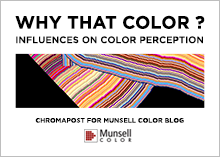
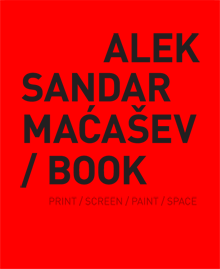







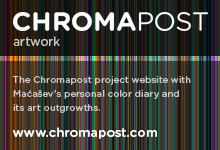
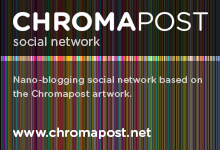
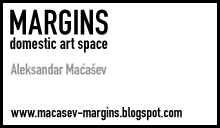



No comments:
Post a Comment